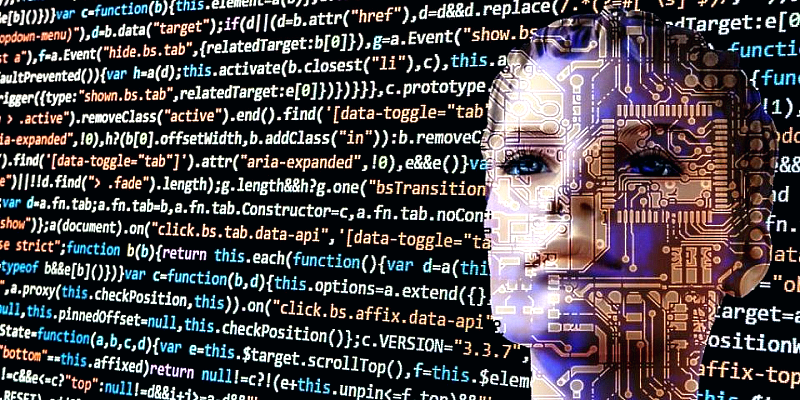In 2022, we were presented with several stunning developments in artificial intelligence (AI).
Some believe that these advances push the limits of what we have now (narrow AI) towards the holy grail of artificial general intelligence (a machine that can mimic the thinking and problem-solving capacities of humans, but faster and more accurately).
Among the many developments in 2022 four breakthroughs are of note and will be significant in 2023 and beyond both within the discussions on responsible design development and AI use and in the transformative power they have for our societies.
First came DALL-E, the AI that can create pictures from language prompts. Many of us enjoyed playing with the tool and embracing the ability it gave to us to design in new ways. Others worried about AI taking over our human creativity.
Moreover, since DALL-E pulls photos from the web, there is concern that some cultures with little online representation will be left out of these models and will become less represented in the world.
Next there was Chat GPT, DALL-E’s literate and coder ‘sibling’. Whilst the former creates new images, the latter creates text and code. These texts can be newspaper article, students’ essays, speeches, scientific papers and more.
Again, it does so from a written prompt provided by the users. The concerns that surround DALL-E also surround Chat GPT. But there is no doubt that if Chat GPT improves efficiency and if it is used in the right way, it is a ‘black box’ so we have no understanding of how it works, it will be a hugely important tool.
Furthermore, the AI development company DeepMind created an algorithm which codes very well. The system, AlphaCode can beat 72 per cent of human coders in average competitions and recently solved about 30 per cent of the coding problems in a highly complex coding competition against humans.
Whilst this figure may seem low, this algorithm will learn exponentially—think AlphaGo which now can beat every human Go player. It is unlikely that AI will take over programming completely, but it will cut the number of humans needed to code dramatically.
If all the above are extraordinary, and they are, the arrival of GATO is the icing on the cake. GATO, which is described as a generalist agent by inventors DeepMind, is an important development because whereas currently powerful algorithms do one or two things exceedingly well, GATO can do many. This includes playing Atari, titling images, chatting with users, stacking blocks using a robotic arm and more.
This development moves us away from narrow, one task, AI and into the realm of an AI being able to do multiple tasks.

The AI developments in 2022 have laid the groundwork for significant progress and refinements in 2023. This includes, most notably, setting up the conversations about how best AI can be used and expanded.
So far, we have seen lower-than-expected uptake by businesses as the private sector waits for governments to establish regulations. This is likely to change as regulatory regimes like the European Union AI Act, the US AI Bill of Rights and Chinese regulations come into effect.
In 2023, we can expect several industries, beyond tech itself, to further embrace the technology. In some sectors, like care of the elderly and healthcare, we will likely see many positive advancements.
This includes enhancing care through tasks like reading x-rays and improving administration systems, which will lower costs and ensure regular treatments, among other benefits. We can also expect to see AI developments in manufacturing, pharmaceuticals, mobility and in verticals such as human resources.
However, we must take care not to exacerbate the North-South divide as so many businesses in the Global South are small and medium size enterprises which don’t have the money, the computer readable data or the skill to incorporate AI.
This year, we can also expect more dialogue over how best to use AI in society.
In some sectors, this will require difficult conversations. Law enforcement agencies, for example, are increasing using AI-power facial recognition systems, which have sparked widespread concern over privacy and surveillance.
AI-powered weapons are also being deployed in civilian settings. The city of San Francisco, for instance, came under pressure for debating the use of lethal AI robots by law enforcement officials.
Within a short time, there was such an outcry that city officials reversed their proposal, but the issue remains live and something on which all citizens should have their say.
Therefore, surveys like the one being carried by the United Nations Inter-regional Crime and Justice Research Institute and the Interpol Innovation Centre are a good first step in giving the public a seat at the table. In this case, the agencies are asking the public their feelings on the use of AI by police.
The feedback will inform their work to develop a Toolkit for Responsible AI Innovation in Law Enforcement – an innovative and practical guide to support law enforcement agencies to carefully navigate this complex topic.
Above all, the fundamental question for 2023 remains not whether AI systems can be accurate and efficient, but rather how should they be used and to what degree.
(Kay Firth-Butterfield is Head of Artificial Intelligence and Machine Learning, World Economic Forum.)
ADVERTISEMENT
ADVERTISEMENT








































